
Toyota Highlander Review

Introduction
Given that Americans tend to like everything that little bit bigger, ‘mid-sized' means 'large Range Rover-sized’ by British measurements.
But British measurements include higher standards, too. Japanese manufacturers are not held in the same high esteem over here as across the pond, after all. And let’s not forget that the United States of America is where Toyotas and Hondas are viewed in a different light. There they are perceived as quite luxurious - in the same way we Brits regard a BMW. But would you really rip up that cheque for that new BMW X5 to have a Toyota?
The Highlander is priced like a premium SUV – so we aim to find out if it can repeat its success on the other side of the Atlantic.
Review Sections
Select's rating score* - 3.1 / 5
At a Glance
The Highlander is certainly an imposing vehicle. At 4.96 metres long, it is just a few centimetres shorter than a Range Rover. While it can't compete with Land Rover for looks, it has aggressive styling, with lines along the bodywork and protruding cheekbones surrounding the front fog lights, adding to its character.
It certainly can't be accused of being dull as ditchwater, which is something many Japanese cars have been criticised for over the years. The East Asian manufacturers still aren’t on the level of the European brands in terms of aesthetics, though, and the Highlander is likely to divide opinion. We suspect some will love it, while some will hate it.
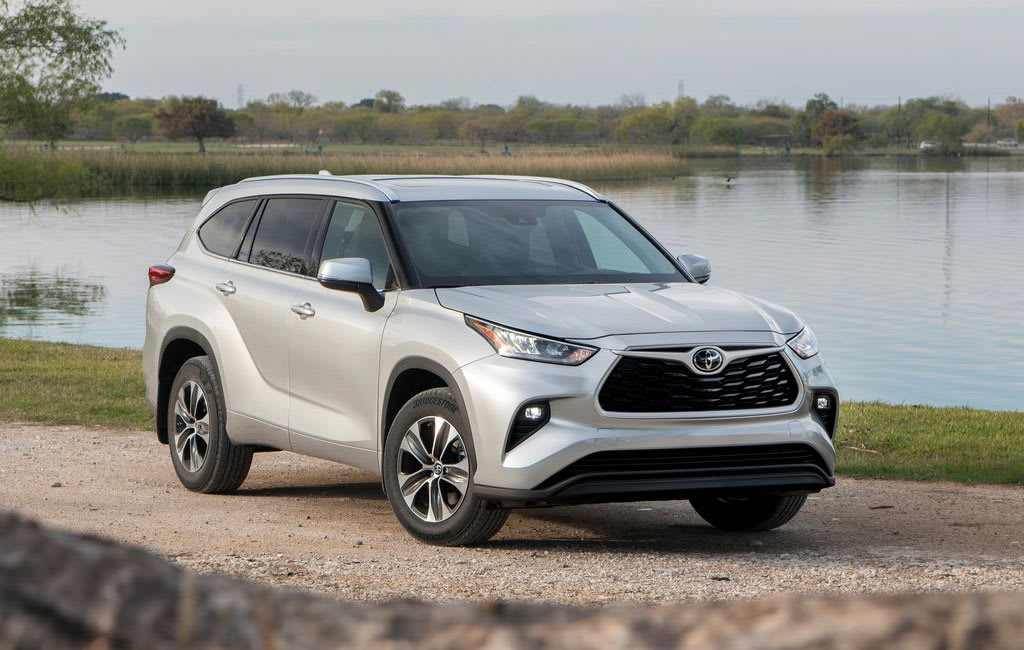
The marmite looks continue around the back, too, which has a typically Japanese feel, with lots of diagonal angles and horizontal rear lights tapering towards the centre of the boot.
From the side, the black wheel arches can become invisible in a particular light, giving a false impression that the vehicle is riding very, very high, making it look rather odd.
Key Features
The Highlander has just a couple of trims available here in the UK – the Excel and the Excel Premium grades – and both are available with only one engine: a 2.5-litre petrol hybrid, producing 245bhp.
Four-wheel drive, 20-inch alloy wheels, a premium sound system, panoramic roof, collision avoidance, lane assist and reversing assistance are all included as standard.
There are a trio of driving modes to choose from – Sport, Normal or Eco – which can give you more or less responsiveness from the acceleration, depending on whether your priority is performance or fuel economy.

When the battery is sufficiently charged, the hybrid system will let you run on electric power only at low speeds, or while heading downhill. So, it’s useful for rush hour traffic jams and slow-speed “downtown” drivers, which should help to cut down on the fuel bills.
Performance & Drive
The Toyota is reasonable to drive. Inevitably, for a large SUV, it's not built for performance, though it's hardly sluggish away from the line. Zero to 62mph is dealt with in barely more than eight seconds, so you can have confidence it’s going to respond when you put your foot down in any given scenario. And if you’re interested in the Highlander’s top speed, then 111mph is what you’ll achieve if you find yourself on the autobahn in Germany.
The steering is welcomingly light, responsive and direct, which is perfect for threading such an imposing vehicle through town centres. It is just as effective on the main roads and dual carriageways, too.
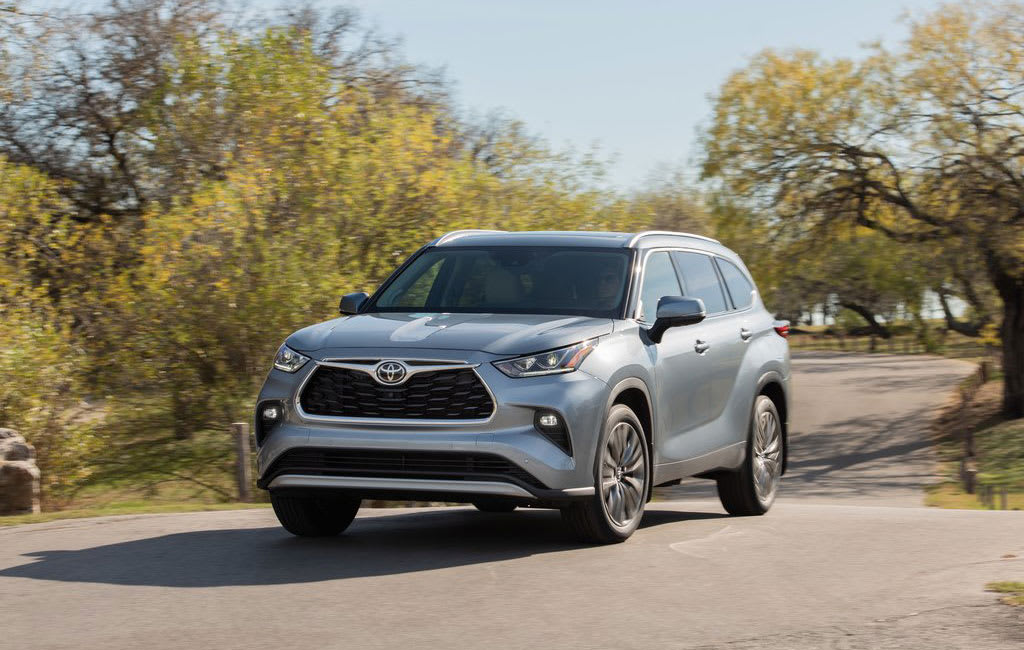
The ride is a little stiff on the 20-inch wheels, and we're surprised Toyota hasn’t offered the 18-inch alternatives that it provides in other markets to suit all tastes. Nevertheless, the balance between firmness and comfort is a reasonable compromise. Furthermore, it fairs well in terms of ride comfort compared with its rivals, although it does feel a little springy when the road surface gets a bit rougher. And, let’s face it, British tarmac isn’t always that forgiving.
There is quite a bit of roll in the corners, which is natural for a car of this size. Mind you, similarly-sized SUVs tend to fair better, and the Highlander, despite having intelligent all-wheel drive, feels like it ought to have more grip on the road.
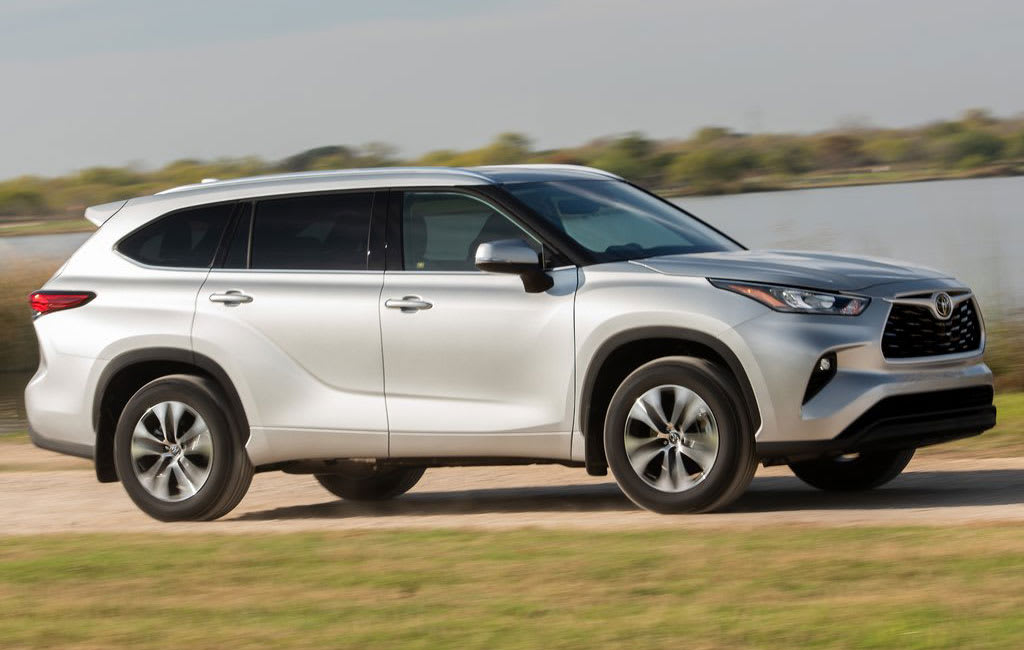
The noise insulation is very good, keeping wind and road din to a minimum. Toyota addresses the sound levels with the positioning of silencers in the dashboard, roof, and floor, as well as liners in the load space and wheel arches. Acoustic glass for the windscreen and front glazing is present, too. These processes help ensure a noticeably hushed cabin environment.
On the whole, Toyota has done an excellent job of limiting the downsides of such a large vehicle in terms of its overall driveability. That said, the vehicle's handling could still be improved.
Running Costs & Emissions
Typically, the Highlander manages in the region of 39.2 to 39.7mpg on a typical trip, but expect this figure to plummet if you’re driving around town and the hybrid battery has little charge in it.
Hybrid cars can be challenging to gauge in terms of mpg figures, as what you'll get in practice depends on a whole range of factors, particularly how much running you're able to do on electric-only. However, given the vehicle's sheer size, we don't think late 30s mpg on the combined cycle is bad at all.
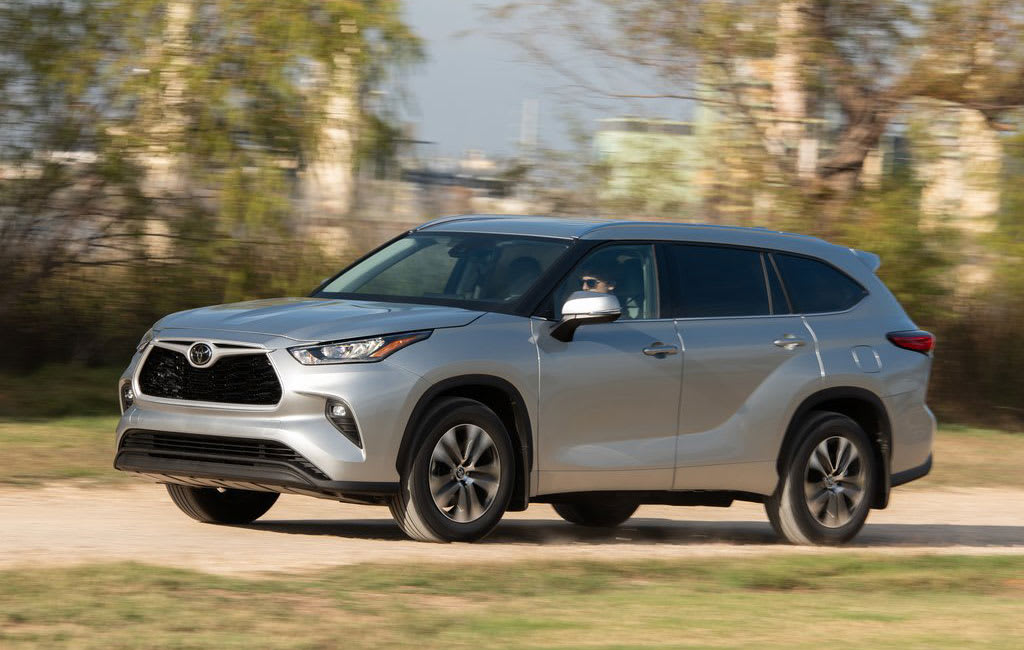
It comes with a five-year 100,000-mile warranty, and the company car tax will cost around £3,600. The Highlander Excel trim produces 160g/km of CO2. Curiously, the Excel Premium version measures 159g/km for reasons we can’t understand. It does have exactly the same engine, after all.
The difference is negligible, and the slight distinction between the two doesn't straddle between two tax brackets. So, it'll be £545 to Her Majesty's Government for the first year on the road, regardless of which model you go for.
Range & Batteries
The Highlander is a self-charging hybrid, so the battery is charged from the engine, meaning you don't need to think about plugging the SUV in to top up on electricity.
There's an in-vehicle display that tells you how much charge it has, and the battery will sip up energy from the engine when you take your foot off the accelerator. It will slurp up even more when you use the brakes, thanks to its regenerative braking system.
Although certain settings can maximise running in electric-only mode, the Highlander isn't designed for this – it's very much intended to run on batteries in stop-start traffic before firing up the engine once you're through the queues and properly on the move.
Interior & Technology
Japanese cars have traditionally struggled with the interior, but it looks like they are heading in the right direction.
The cabin is satisfactory and impressive in some ways, but it could hardly be described as luxurious.
Touches of silver break up the all-blackness inside, but in truth, there are many prettier examples out there, and the lack of variants to choose from is frustrating.
Analogue dials behind the steering wheel are complemented by a 4.2-inch screen, while the infotainment system features an eight-inch screen.
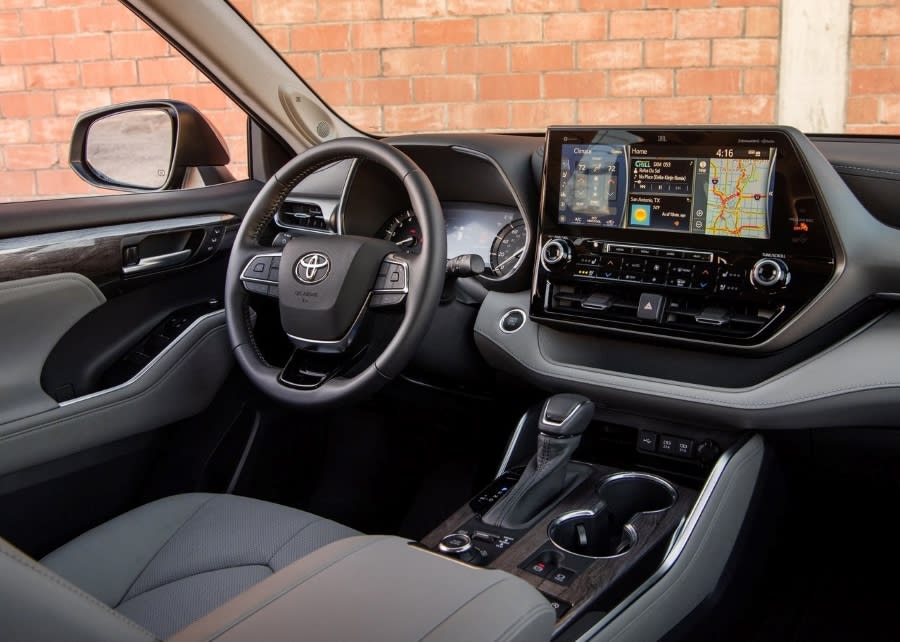
The touchscreen is housed in a single unit which is very imposing but almost looks over the top. Visually, a lot is going on inside and some who prefer a cleaner and simpler cabin might find it a bit cluttered and too busy on the eyes.
On the plus side, space and headroom are plentiful, and the front seats are heated as standard, with rear heated seats included on the Premium version.
There are three USB sockets in the front and two in the back, so almost everyone should be able to charge phones and tablets.
You will also get seven people on board in three rows of seats, accommodating two people in the front, three on the second row, and another two on the third row.

Indeed, the second tier of seating has a 180mm sliding range, meaning there is genuinely accessible accommodation for the people sat behind in the third row. And, just in case you’re interested, legroom for front seat passengers is up to 1,067mm; 1,043mm in the second row; and 703mm in the third row.
Triple-zone climate control is available, too, as standard with panels in both the front and rear. The Highlander comes with plenty of kit as standard, including a rear-view camera, automatic wipers and headlights, smart-entry and push-button start, electronic parking brakes and paddle shift for the gears.
Highlanders are fitted with the ‘Touch 2’ infotainment system, which includes a DAB radio and the eight-inch touchscreen.

The SatNav is available and works reasonably well, but there are far better navigation systems out there, and the map design looks very dated with a top-down display.
Nevertheless, Android Auto and Apple CarPlay are integrated within the infotainment system, which, on the whole, is well presented and responsive. It is not bad, but considering the level of technology that Japan is renowned for, it is disappointing and will leave you expecting better.
A JBL premium 11-speaker audio system is included, too, which sounds great.
The Excel Premium version also adds a head-up display for the driver.
Practicality & Boot Space
The big selling point of this vehicle is the practicality – and it doesn’t disappoint. In terms of boot space, it’s massive.
It measures 865-litres with the third-row seats folded away, expanding to 1909 litres with the second row of seats down.
By comparison, the Kia Sorento has 813-litres expanding to 1996, while the Hyundai Santa Fe only had 547, increasing to 1625.
Impressively, it mainly beats, or matches, the equivalent figures of the largest BMWs, Audis and Land Rovers on the market.
The Highlander even has 332-litres of space with the third-row seats in place. So, if your idea of a great day out with your friends is to hit the supermarket, you should be able to fit at least some shopping in the boot, which opens and closes at the push of a button.

There’s loads of room for even the tallest of drivers, who can move about thanks to the electronic seats. They'll have a good view out of the enormous windscreen, too, while the pillars don't get in the way either, giving you a seemingly cinema screen-like view of the world.
Taller passengers are taken care of in the second row, which has plentiful legroom and, as alluded to earlier, can be moved forwards and backwards on a 60:40 split-bench, offering the flexibility to increase legroom as you please.
The third-row of seats are best for children, although adults will be fine for shorter trips.
The SUV also has an impressive two-tonne towing capacity, so the Toyota should be good for pulling along the largest of portable caravans.
Safety
The Highlander comes with a system called Toyota Safety Sense. This includes a ‘pre-collision’ system with pedestrian detection; emergency steering assist for taking avoiding action, lane departure assist and adaptive cruise control, which will ensure you can’t crash into the back of a vehicle in front of you.
Braking assistance, stability control and traction control are all included, along with hill-start assist, which will stop you from rolling backwards on a steep starting angle.
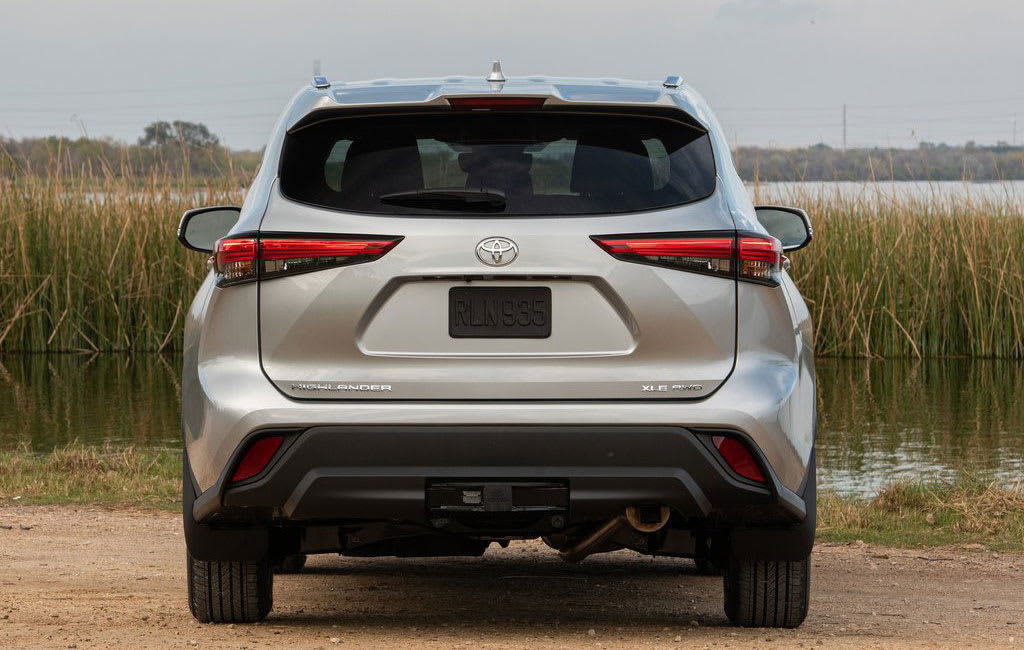
The Highlander is yet to be tested by Euro NCAP, so there’s no safety rating available for it yet. However, Toyotas generally score well (even the small Toyota Yaris earned five stars last year).
The best comparison is the smaller sibling SUV, the RAV4, which scored 93% for adults, 87% for children and 77% for safety assists, also earning it a five-star rating, so it should be a fair assumption that the Highlander will do just as well.
Options
With only one engine and two trim levels to choose from, the options are few and far between.
It is to Toyota’s credit that so much is included as standard but, if you’re the type of person who likes to upgrade, you might be left disappointed.
For the exterior, there are four metallic colours to choose from (silver, blue, black and grey), but pearlescent paint (a choice of Tokyo Red, White Pearl and Moondust, which we'd choose just for the name) can be added too.
Most of the optional extras are rather mundane, such as a protection plate for the rear bumper, a liner for the boot, side steps and a towing pack.

All are monstrously expensive for what they are, and it's a bit of a puzzle as to why Toyota has included so much advanced kit as standard, but then left out relatively simplistic things to offer them as costly optional add-ons.
Disappointingly, there’s very little on offer to customise the Highlander in any way.
Toyota should be congratulated for offering so much as standard and encouraged to continue this trend, but the catch is that it explains the very high asking price.
Even a wider choice of standard features, such as interior styling and wheel designs, is completely lacking.
Rival Cars
The Highlander isn’t a premium vehicle and will more naturally rival the likes of the Kia Sorento, the Hyundai Santa Fe and the Peugeot 5008.
But it’s significantly more costly than all of them, coming in at above £50,000. Whether you’re buying it outright or leasing it, it’s going to be on the expensive side.
Size-wise, it’s slightly bigger than the Kia and the Hyundai, comparable to a big Range Rover, a BMW X5 or an Audi Q7, though cheaper than all of them.
However, price-wise, it’s still knocking on the door of £10,000 more expensive than the smaller BMW X3 and the Audi Q5, and around £5,000 dearer than even a Range Rover Velar.
If Toyota insists on such as high price tag, it will have to be willing to be compared with the premium brands – and that is never going to end well.
The offerings from BMW, Audi and Land Rover comfortably out-strip the Toyota in terms of styling, luxury and drivability.
Verdict & Next Steps
It is tough to justify going for the Highlander, unless you absolutely need the bigger size and your budget prevents you from buying something nicer.
It is also just as challenging to understand how Toyota has worked out the price point for this SUV. It is so much dearer than its main rivals – and ludicrously more expensive than the equivalent hybrid Highlander in the USA. Pricing it so high over here looks like it will be a massive barrier to repeating its stateside success.
When you compare it with the premium manufacturers, why would you fork out so much money when the likes of BMW and Audi have slightly smaller SUVs for significantly less?
On the plus side, you get a lot as standard and, if your decision is forced by needing the larger size, then you could view it as a lot of car for less money compared with the premium brands’ biggest vehicles.
Nevertheless, it remains more comparable to the Kia, Hyundai and Peugeot, and, on that note, it’s still a very, very hard sell.
Where to next?
View latest Toyota Highlander leasing deals - guide price from £517.42 per month inc VAT**
Looking for a great deal? Check out our incredible range of car lease deals
New larger SUV? Read our latest Reviews and find the right model for you
Want to know more about leasing? Take a look at our comprehensive Leasing Guides
Interested in everything motoring? Why not catch up on all the latest Car Leasing News.
*Score based on Select’s unique meta score analysis, taking into account the UK’s top five leading independent car website reviews of the Toyota Highlander
**Correct as of 29/06/2021. Based on 9 months initial payment, 5,000 miles over a 48 month lease. Initial payment equivalent to 9 monthly payments or £4656.83 Ts and Cs apply. Credit is subject to status.

.jpg)

















